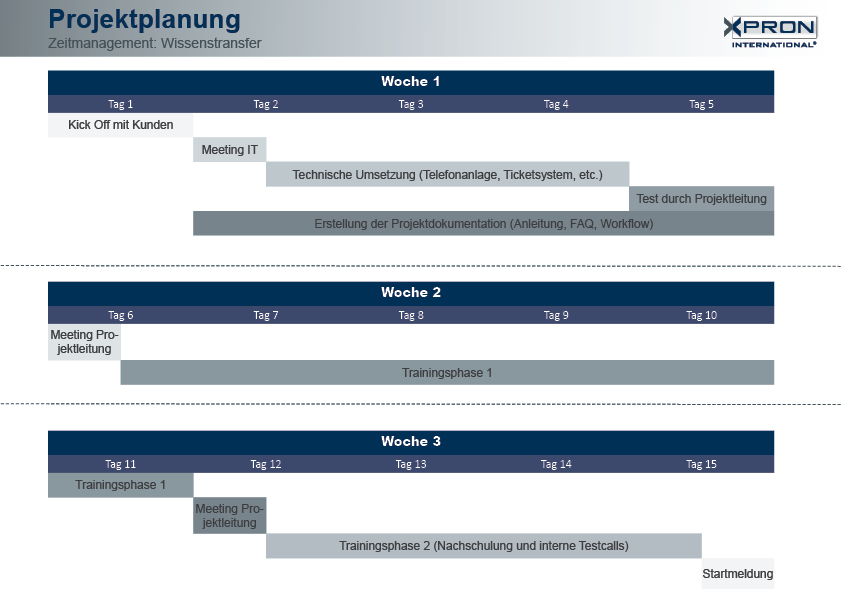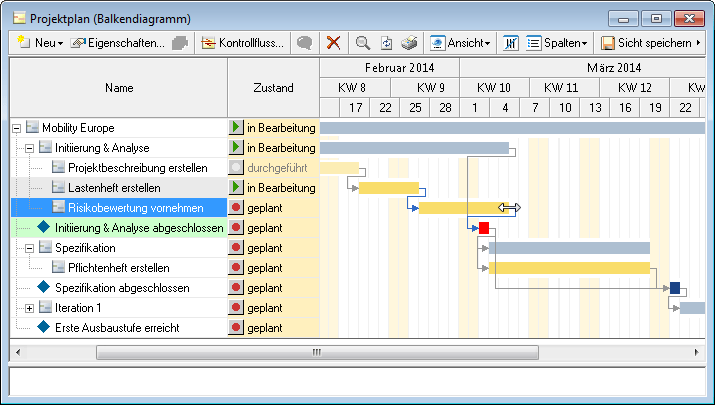Last year, I was part of a project team with a somewhat chaotic and inexperienced project manager. The project plan was poor and consisted of an Excel sheet with the designation of the work packages, a list of the most important contents of the work packages, an indication of the working period and a budget for each work package with a euro sum. From the point of view of project management, a disaster and an unsuitable instrument for a two-year project,
How should a well-done project plan look like?
A project plan is: “…a formal, approved document used to guide both project execution and project control. The primary uses of the project plan are to document planning assumptions and decisions, facilitate communication among project stakeholders, and document approved scope, cost, and schedule baselines. A project plan may be summarized or detailed.”

Intention of the project plan
Industry standards define project plan also to describe the execution, management and control of the project. The project plan must clear these questions:
- Why?
What is the problem or value proposition addressed by the project?
Why is it being sponsored? - What?
What is the work that will be performed on the project?
What are the major products/deliverables? - Who?
Who will be involved and what will be their responsibilities within the project?
How will they be organized? - When?
What is the project timeline and when will particularly meaningful points, referred to as milestones, be complete?
Comment: Milestones are significant times at which something should be done in the project. Milestones describe the point in time, the product, the budget available for it, the responsible team, and the general conditions under which the milestone is assessed as having been achieved (including quality control).
Contents of the project plan
- Scope management
- Requirements management
- Schedule management
- Financial management
- Quality management
- Resource management
- Stakeholder management
- Communications management
- Project change management
- Risk management
Possible structure of the project plan
- Introduction
This part gives a high-level overview of the project. - Project Management Approach
The roles and authority of team members are described with the responsibilities (and – if necessary – hierarchical structure). It represents the executive summary of the Project Management Plan. - Project Scope
The scope statement from the Project charter should be used as a starting point with more details about what the project includes and what it does not include (In-Scope and Out-Of-Scope). - Milestone List
A list of the project Milestones (the stop points that helps evaluating the progress of the project). This list includes the milestone name, a description about the milestone, and the date expected. - Schedule Baseline and Work Breakdown Structure WBS
This description consists of Work Packages, which defines these work packages, as well as Schedule Baseline, which is the reference point for managing project progress, are included here. - Project Management Plans
This section contains all management plans of all project aspects. - Change Management Plan
Defines the process used to change something in the project. - Communication Management Plan
Describes the communication means and the concept when communication between which people is necessary. - Cost Management Plan
Describes payment rules - Quality Management Plan
Describes the quality assurance means and processes as well as the responsible people. - Risk Management Plan
Describes the risk management (focusing on the identified risks) and a kind of emergency (or rescue plan) for surprisingly occurring problems. - Resource Calendar
Identify key resources needed for the project and their times and durations of need. - Cost Baseline
This section includes the budgeted total of each phase of the project and comments about the cost. - Quality Baseline
Acceptable levels of quality.
Additional items may be the Corporate Identity (including a corporate design for publications) as well as the branding given to the project.
